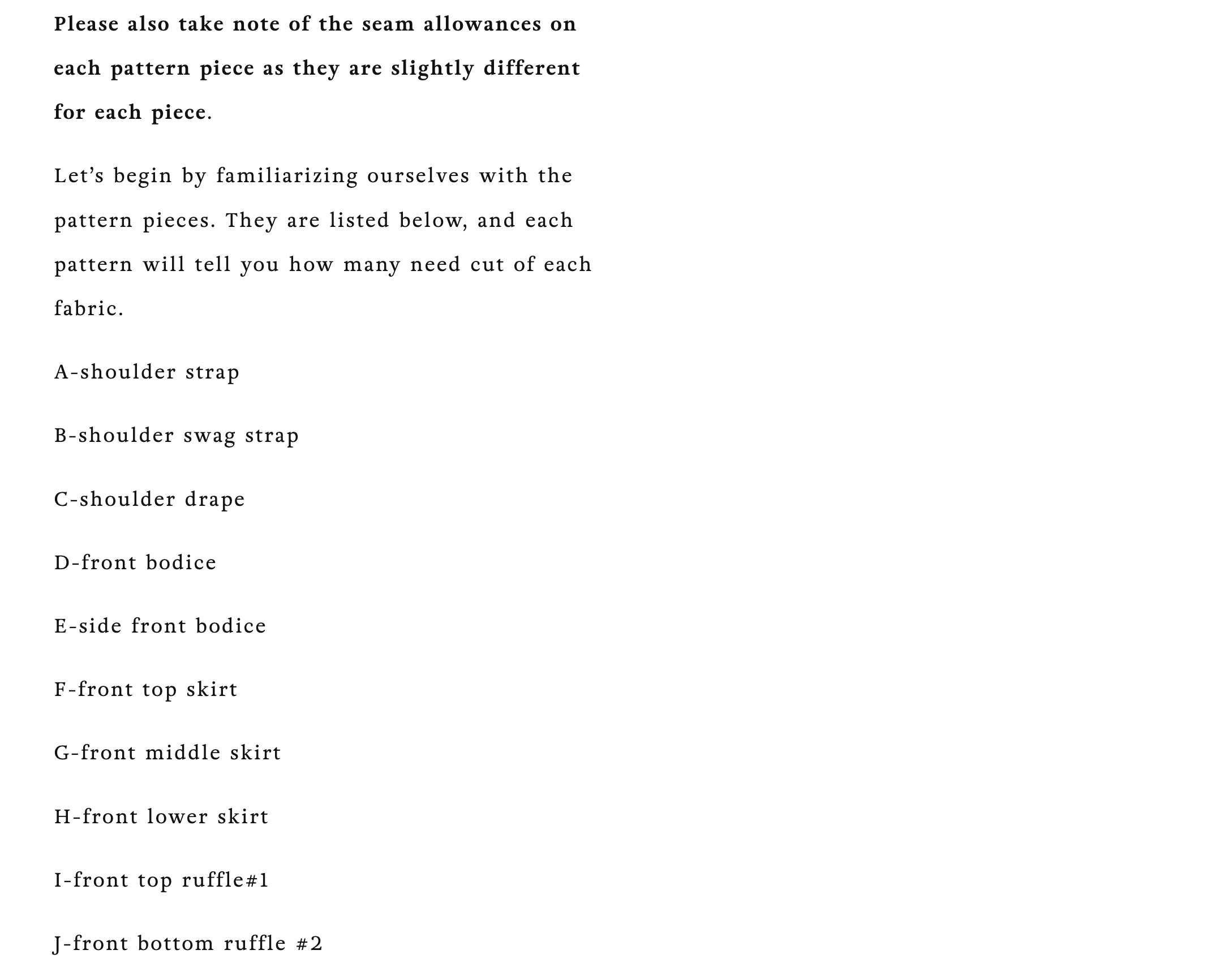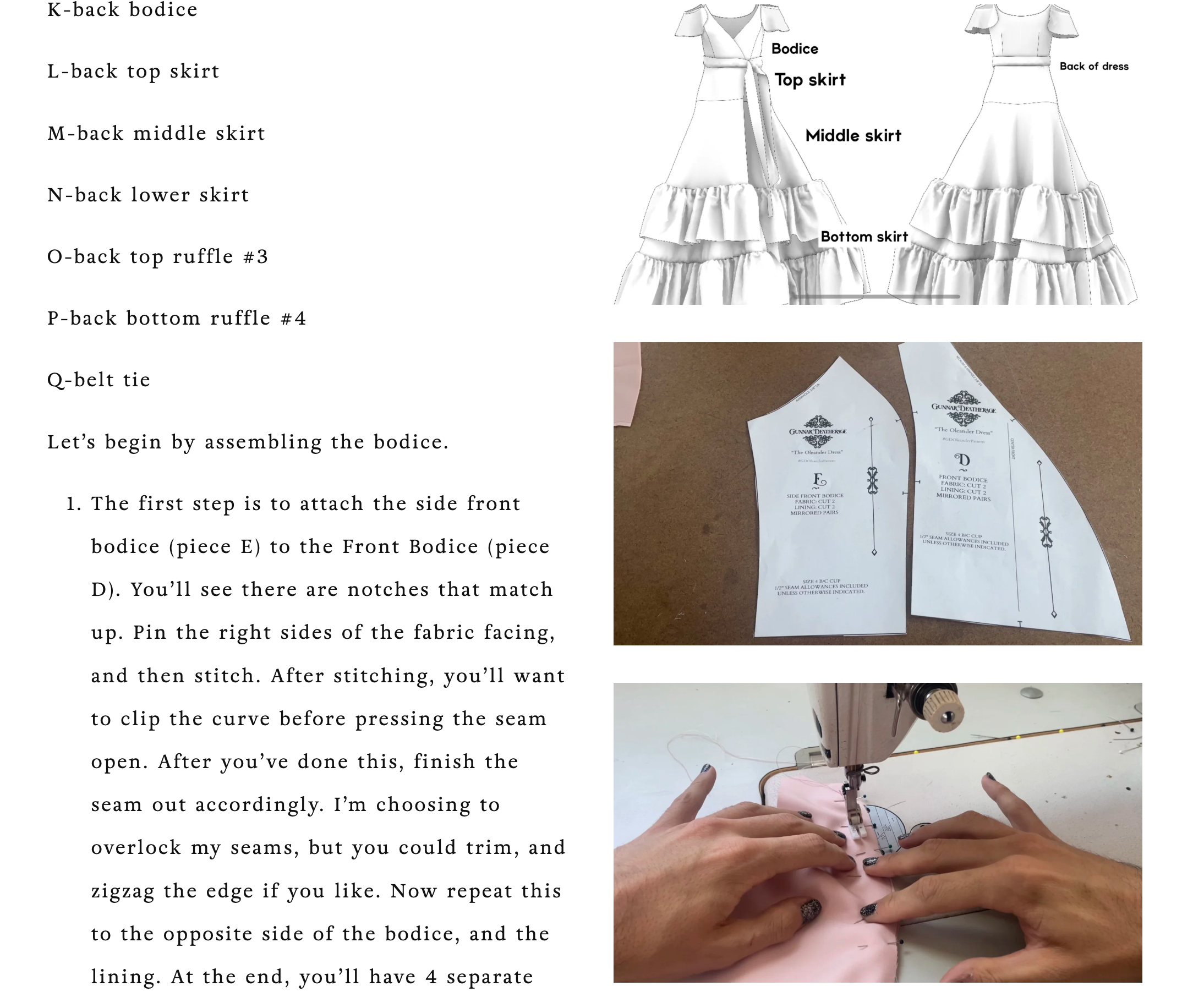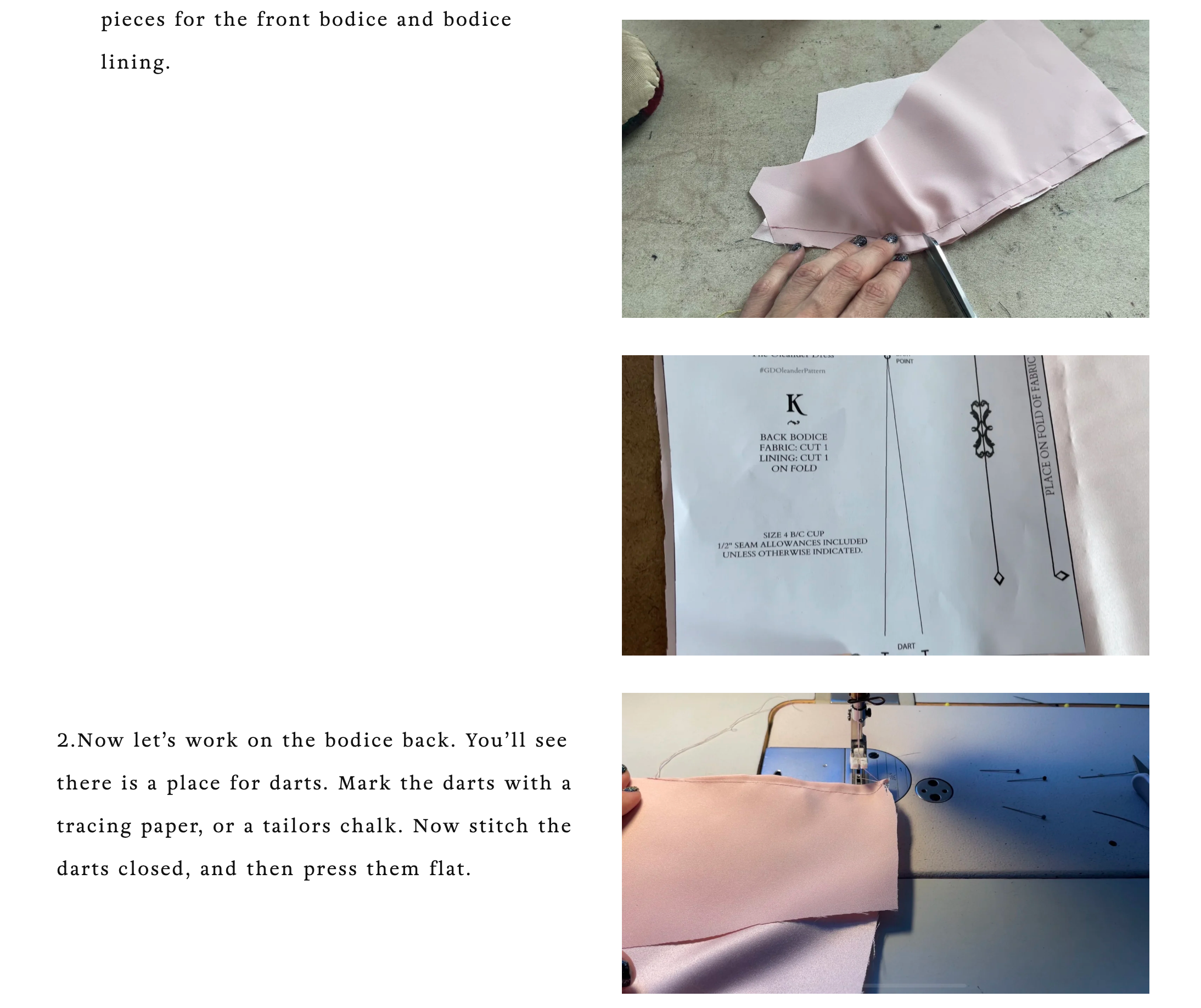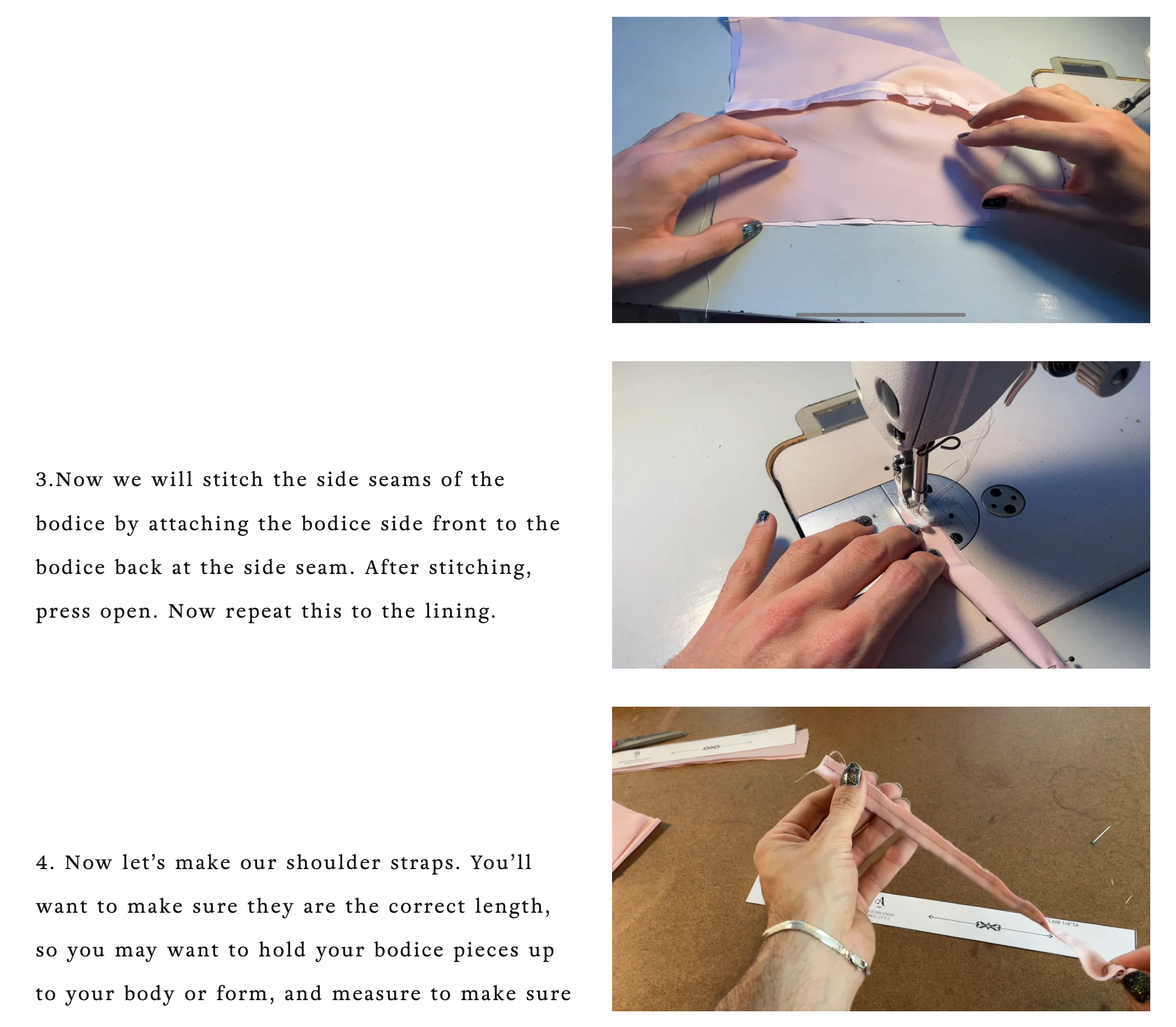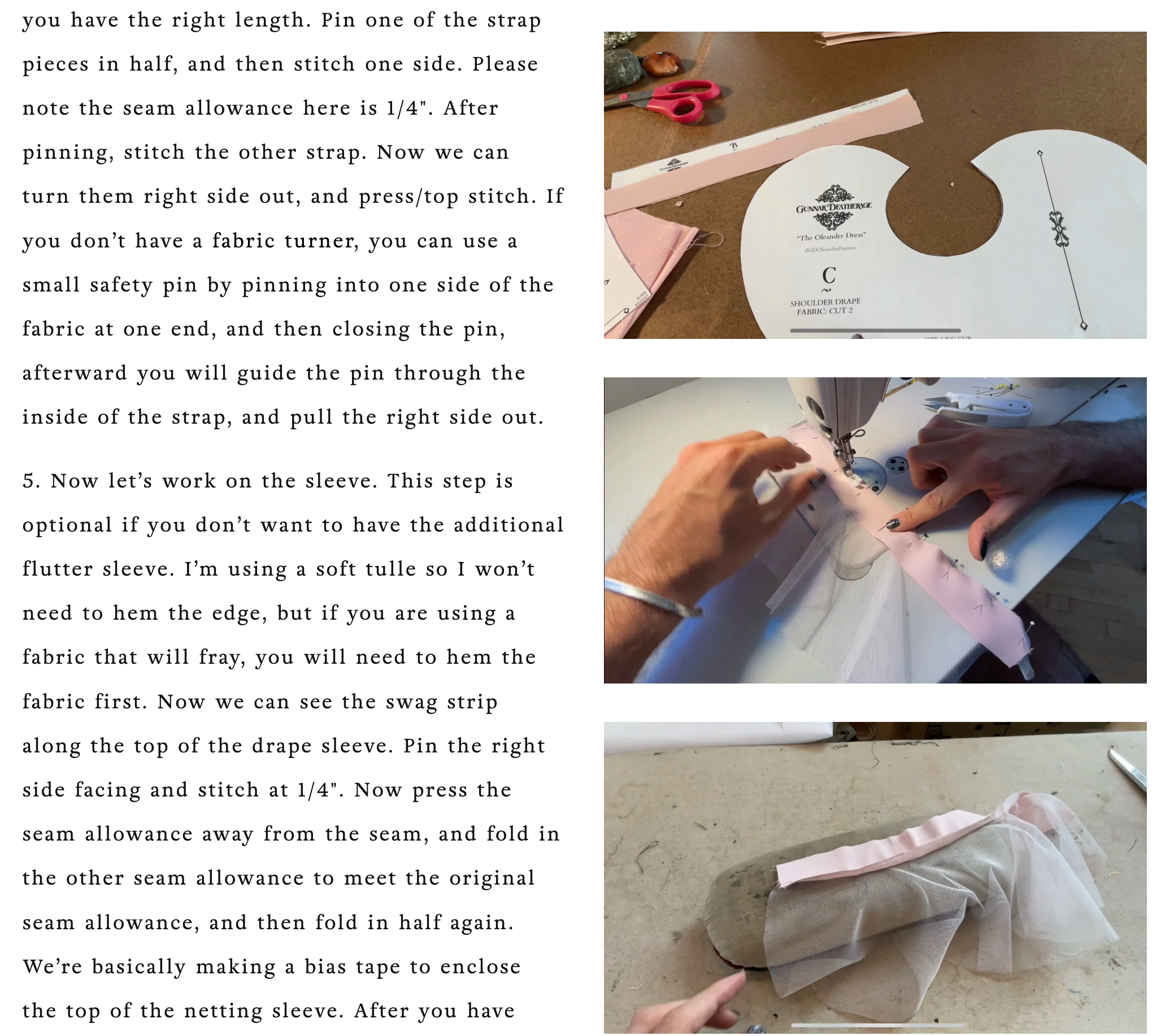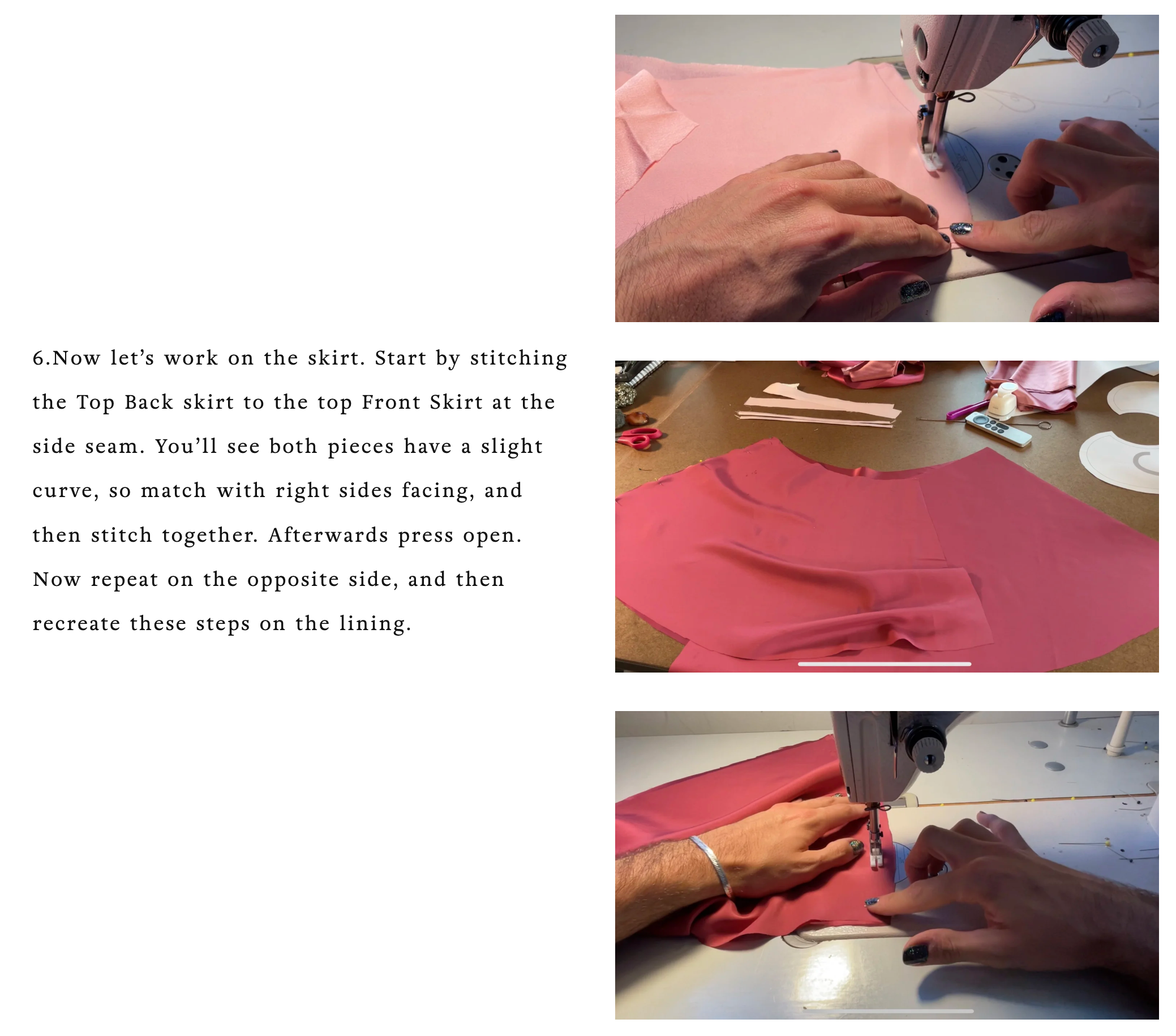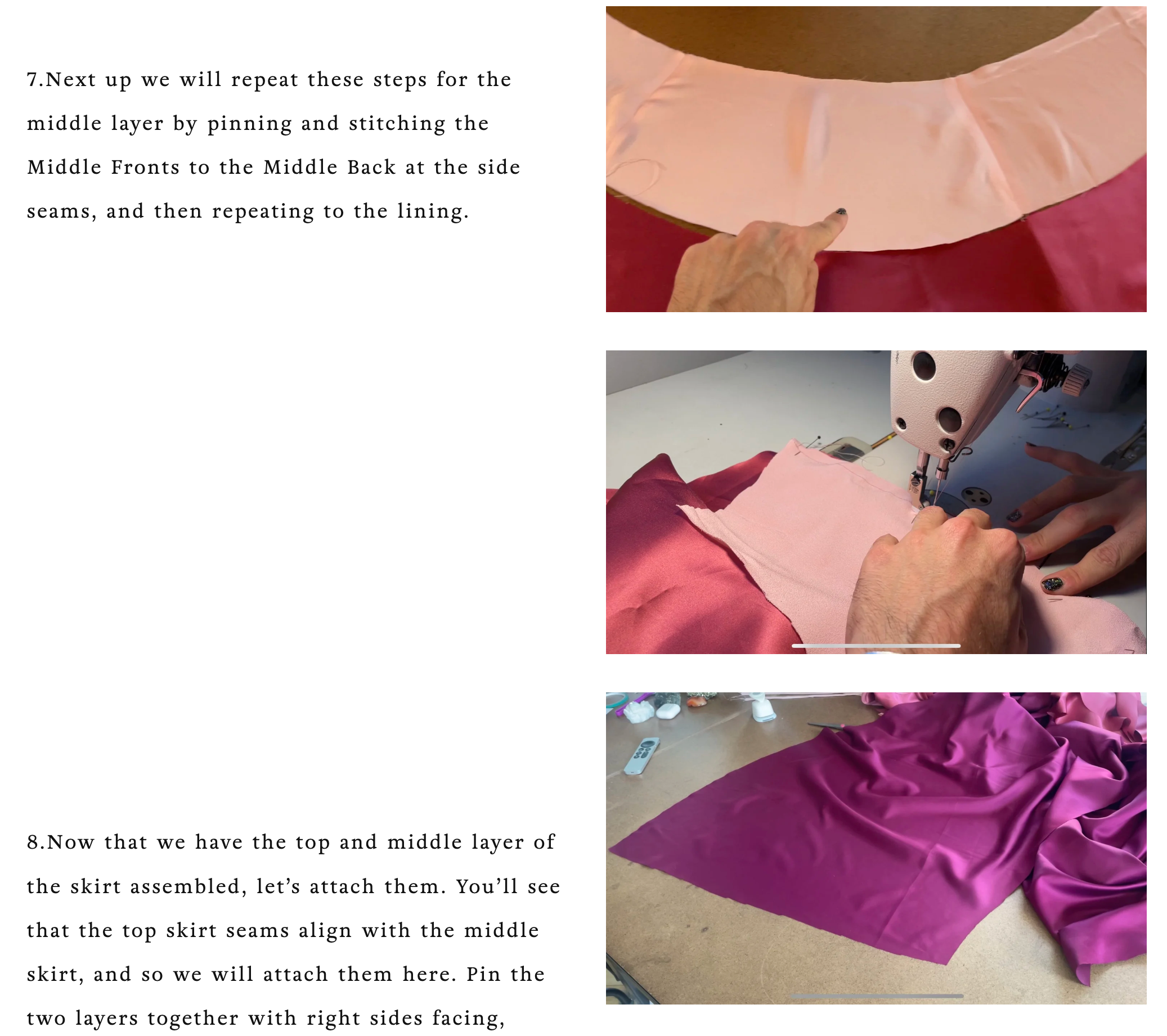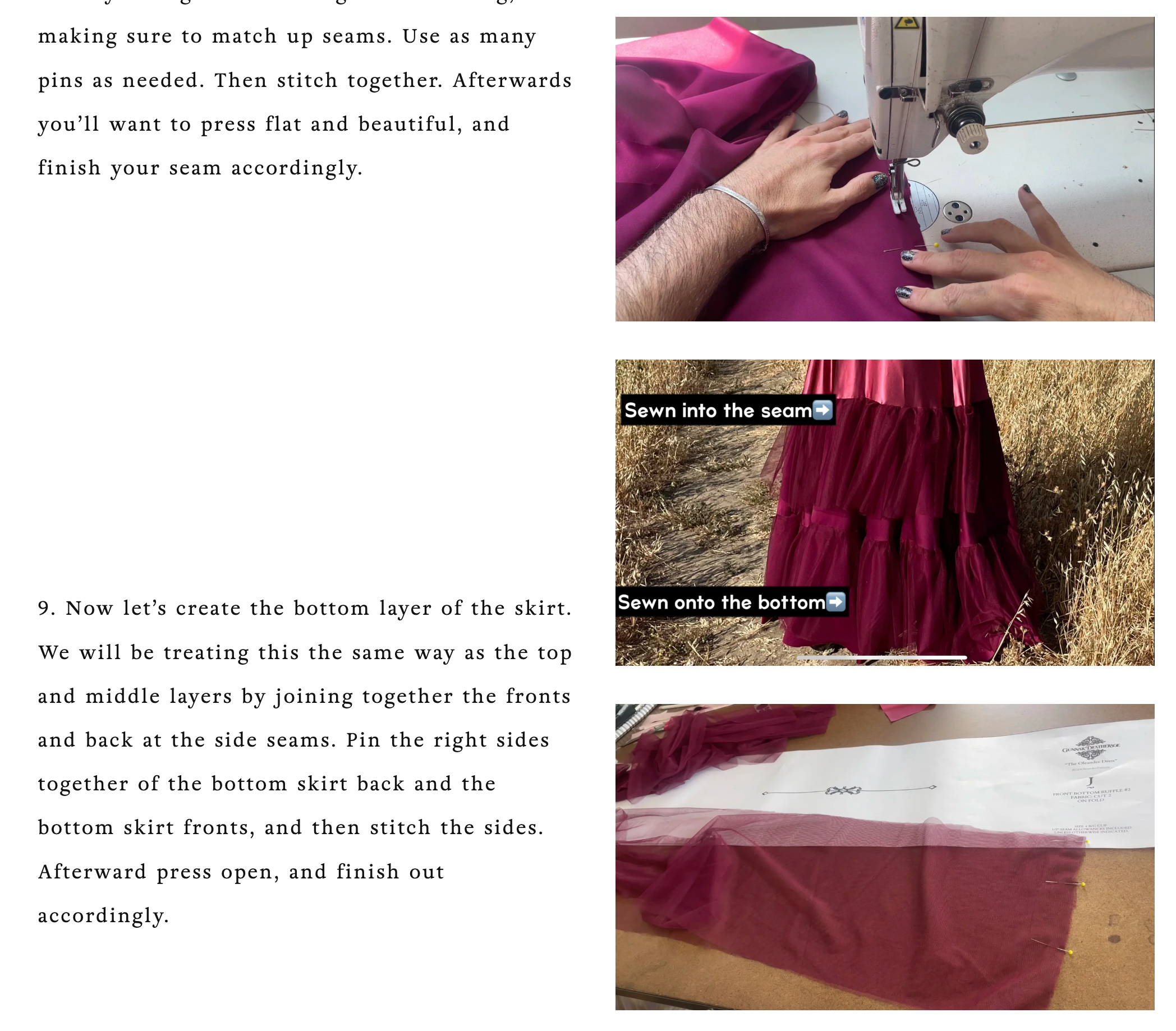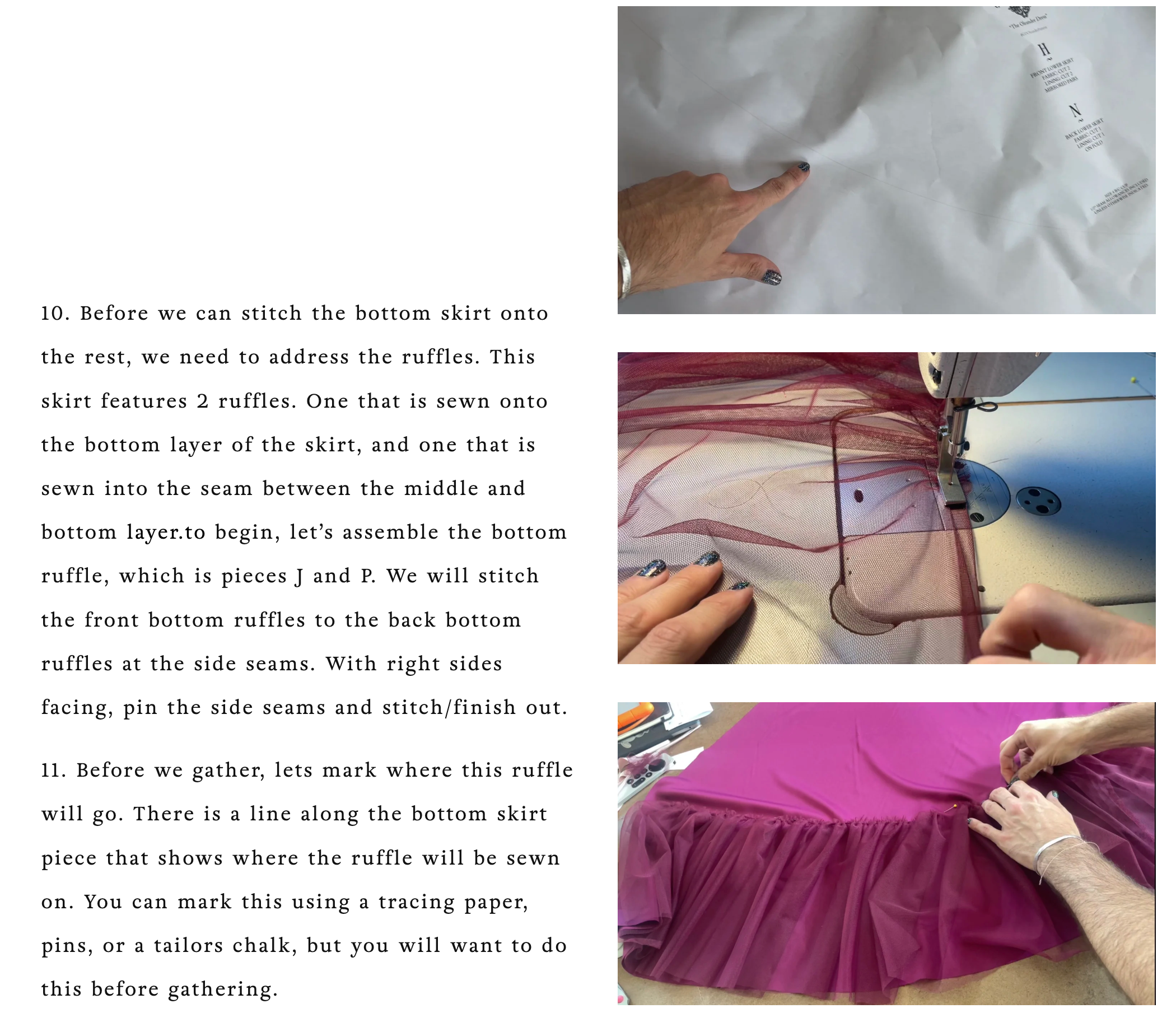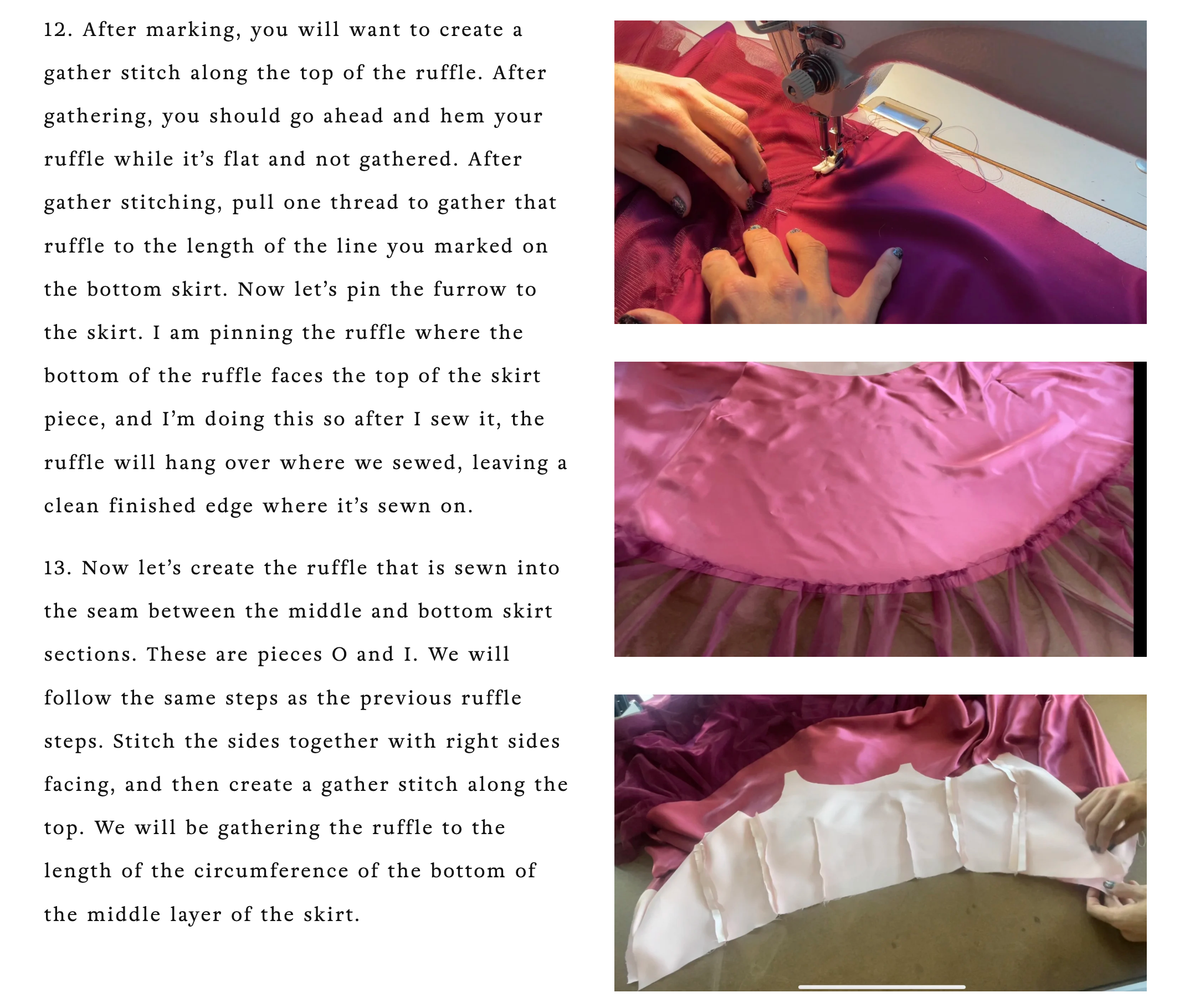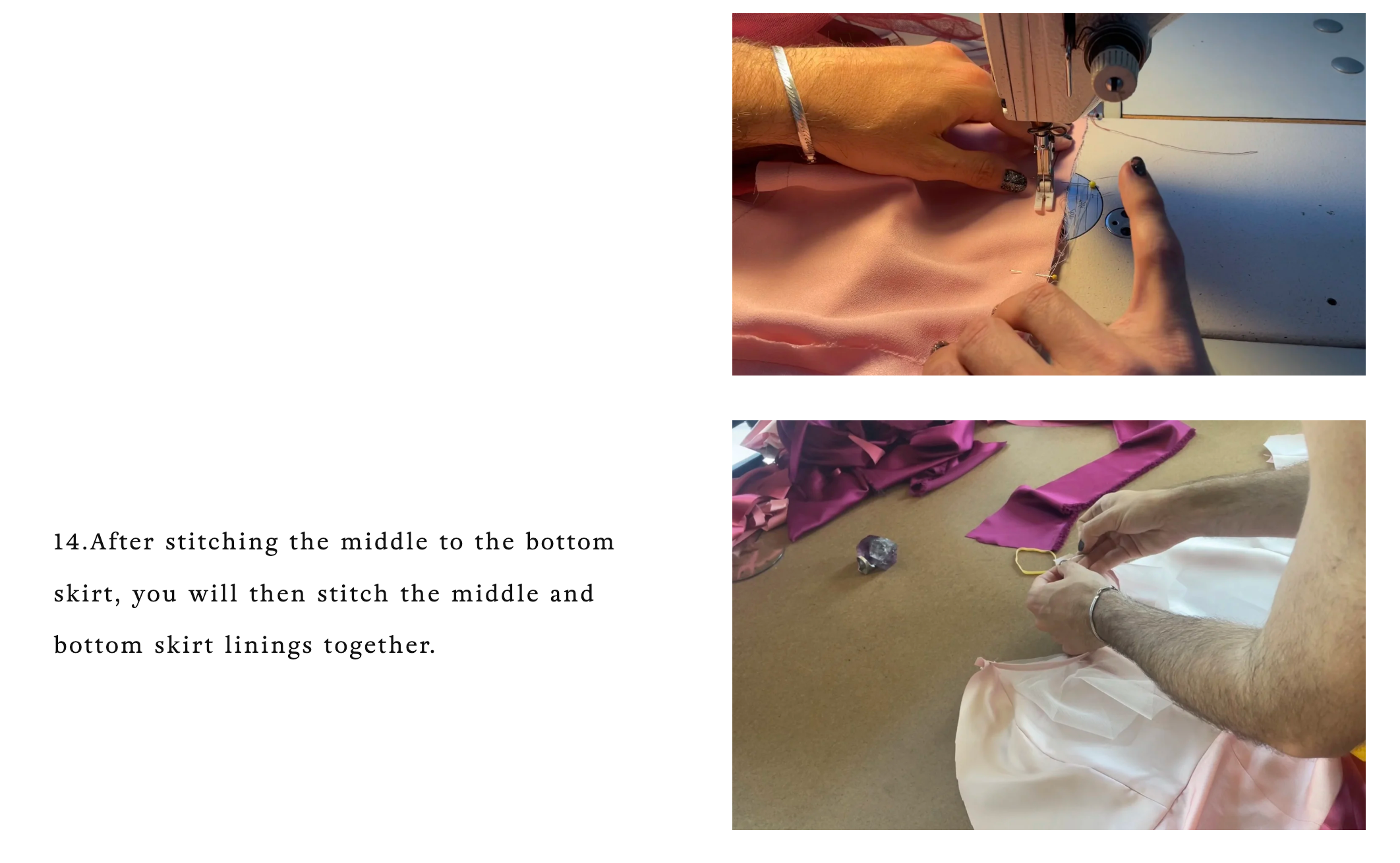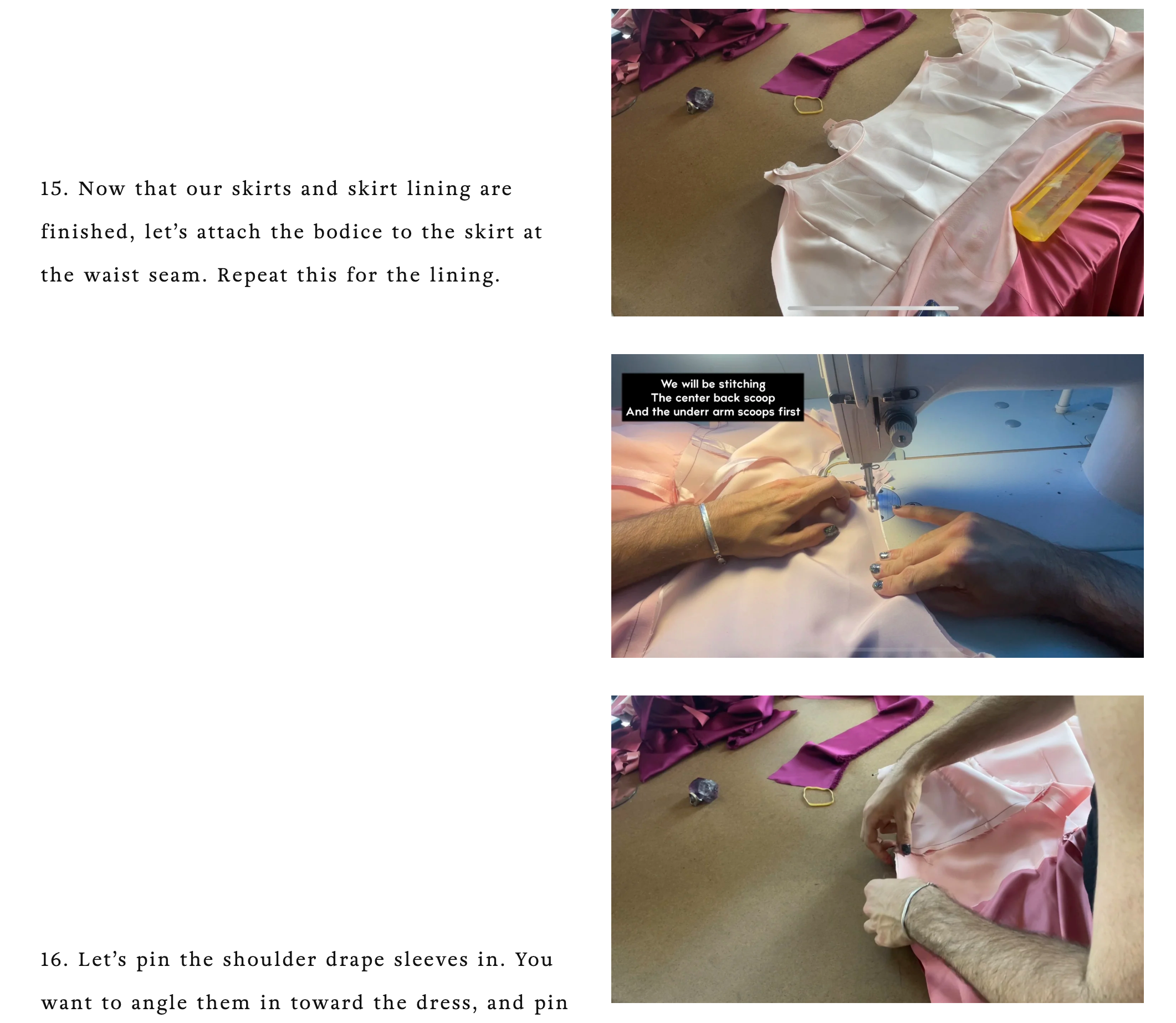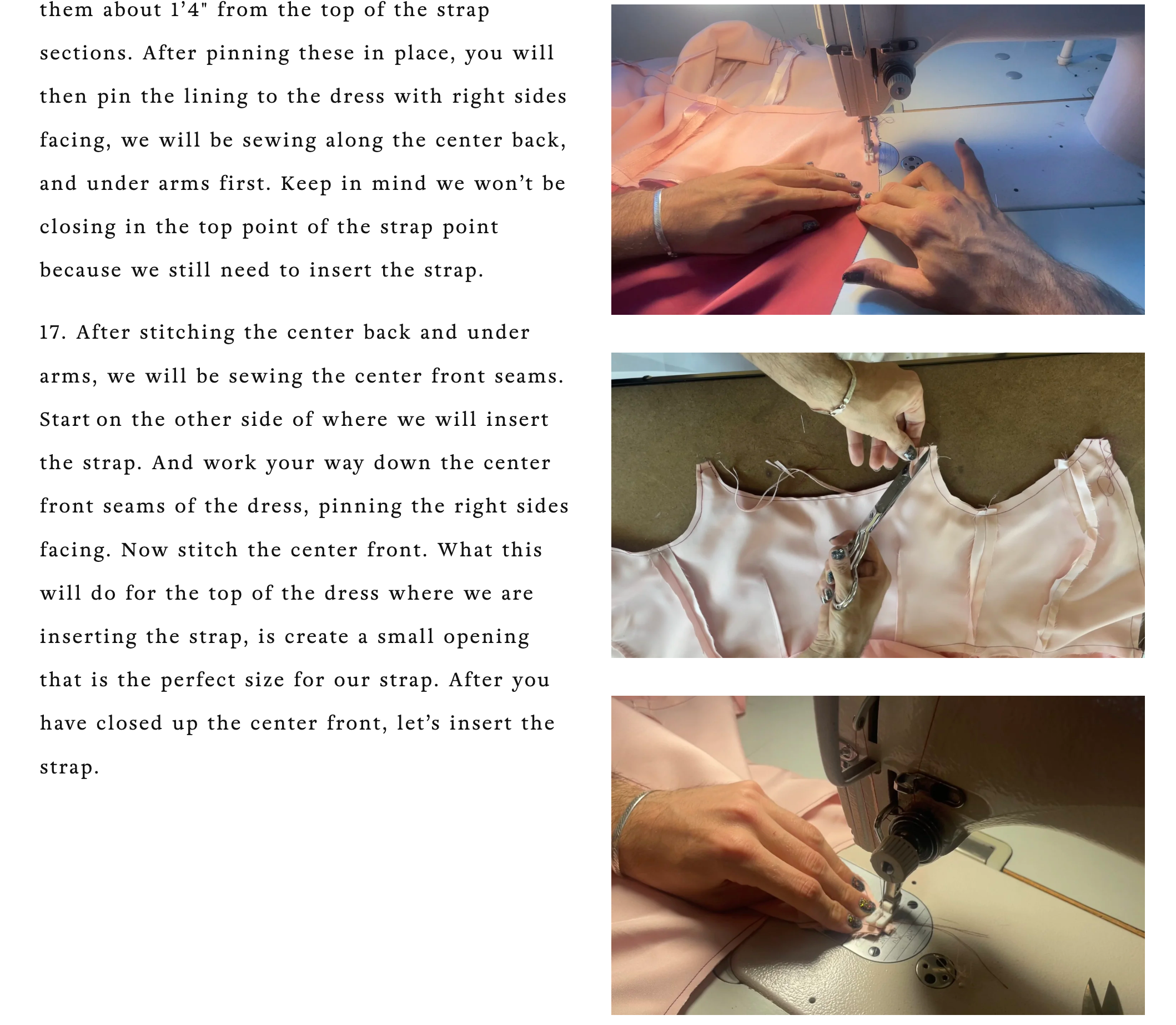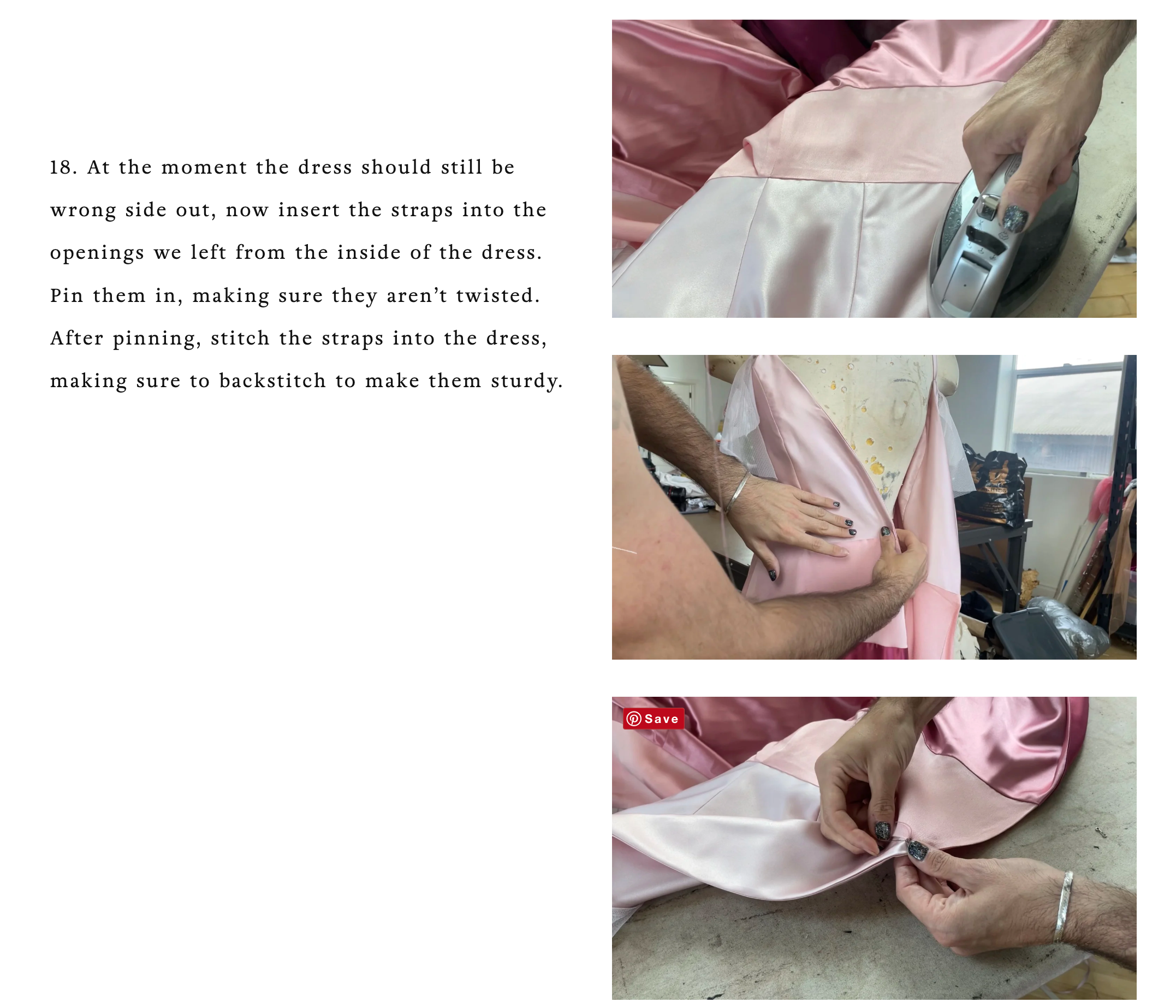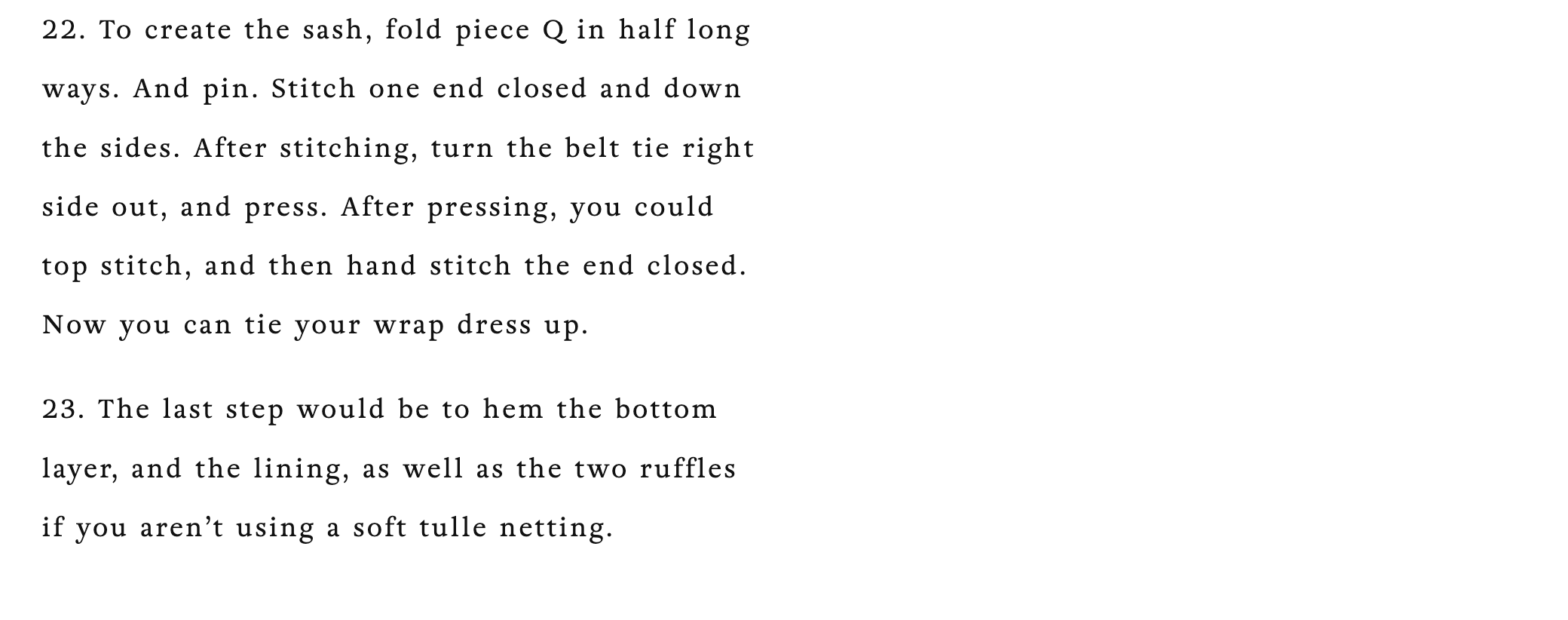The Oleander Dress Sewing Pattern Guide

Welcome to the Oleander Dress! This wrap dress features an optional off the shoulder strap with flutter sleeve, a wrap feature that can be secured with hook and eyes, or with the waist tie that is included with this pattern. For my sample, and the one I’m making in this video, I will be color blocking. The dress has four sections. The top bodice, top skirt, middle skirt, and bottom skirt. There are also optional ruffles that will be added onto the bottom layer of the skirt, and one sewn into the seam of the middle and bottom skirt.
Before we hop into the dress, I always suggest making a muslin mock-up so that you can ensure the perfect fit of your garment. A sewing pattern is meant to be the jumping off point for you to create your dream garment. This dress would be perfect for light weight chiffons, georgettes, charmeuse, or soft tulle netting. I’ll be using different charmeuse and satin fabrics for the base of the dress, but he ruffles at he bottom, and the flutter sleeve are a soft tulle netting.
The yardage, will be noted on the pattern itself. All seam allowances are noted on the pattern pieces themselves. This pattern works great with chiffons, stretch knits, mesh, and any fabric you’d like to have a duster or cardigan out of. This is a very beginner friendly piece, and has minimal steps to complete!
Below are the written sewing instructions, and I also filmed a step by step Youtube video of the entire creation process of this robe which is on the left of this text box! When you make your Oleander Dress, please tag me! I would love to see what your garment looks like!!
